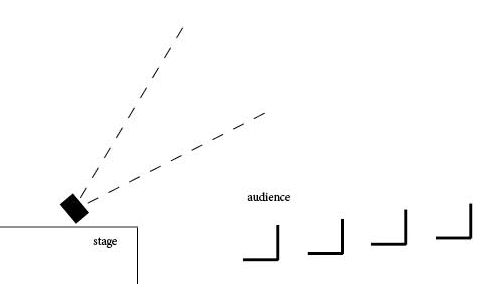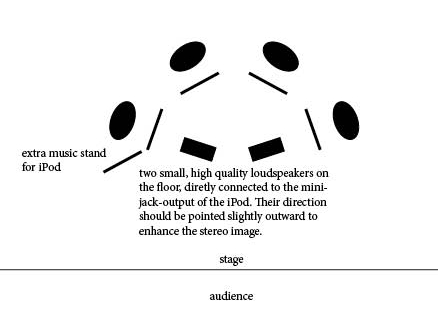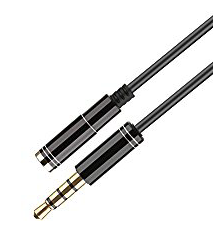behind the light
first performance with the Chiara Quartet
electronics
This composition uses an iPad to play back the prepared sounds.
The iPad should be positioned on an extra music stand, next to the first violin. Its mini jack output is connected to two small, high-quality loudspeakers, placed on the floor in front of the quartet. Depending on the hall acoustics, these speakers should be angled slightly outwards to enhance the stereo image. There is no need for microphones nor additional loudspeakers in the concert hall.

The speakers on the floor should be angled by approximately 45 degrees so that the sound is not pointed directly to the audience but rather bounces off reflective surfaces in the hall and therefore mixes more naturally with the sound of the string quartet. It should not give the impression that the sounds are coming straight out of the speakers and a hight degree of sonic fusion with the live quartet should be obtained.
These Fostex 6301B Monitors have proven to be a good solution in smaller venues.
The mini-jack output of the iPad is connected to the Fostex monitors with a cable TRS 1/8 inch – TRS 1/4 inch and a headphone extension cord.
The installation and use of the iOS application and MIDI pedal
downloads
parts:
behind-the-light_Violin1
behind-the-light_Violin2
behind-the-light_Viola
behind-the-light_Cello




